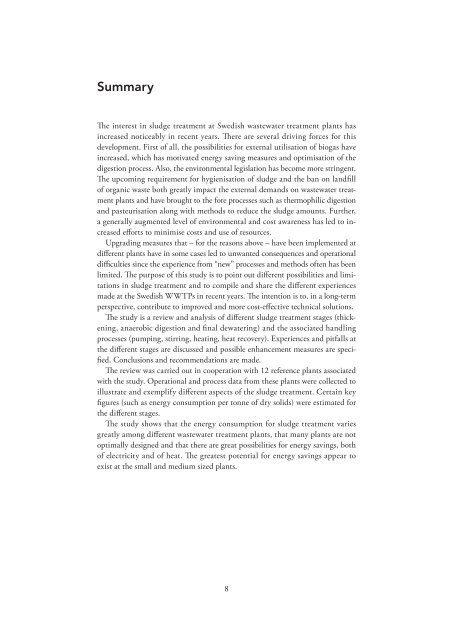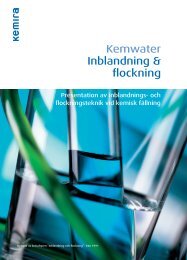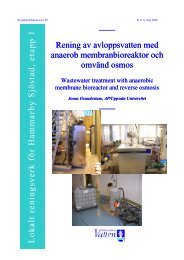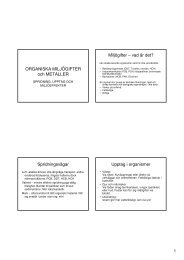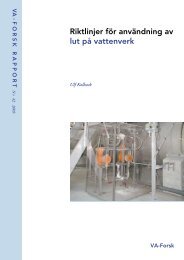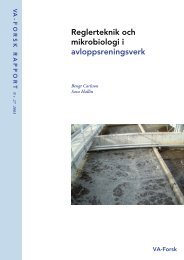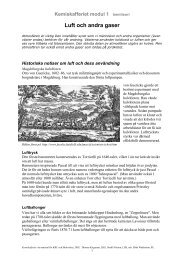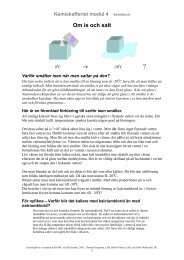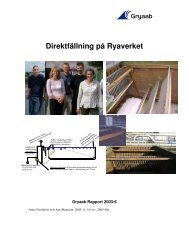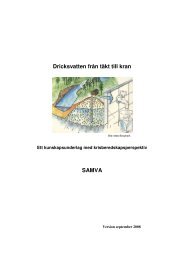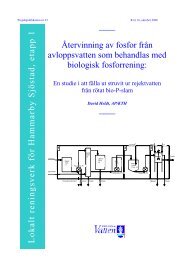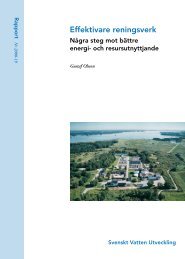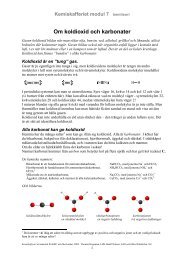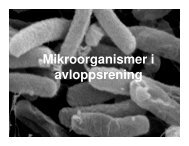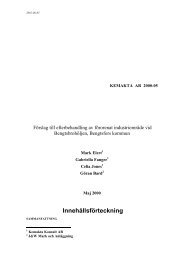Problem och lösningar vid processoptimering av ... - BOFFE.COM
Problem och lösningar vid processoptimering av ... - BOFFE.COM
Problem och lösningar vid processoptimering av ... - BOFFE.COM
Create successful ePaper yourself
Turn your PDF publications into a flip-book with our unique Google optimized e-Paper software.
Summary<br />
The interest in sludge treatment at Swedish wastewater treatment plants has<br />
increased noticeably in recent years. There are several driving forces for this<br />
development. First of all, the possibilities for external utilisation of biogas h<strong>av</strong>e<br />
increased, which has motivated energy s<strong>av</strong>ing measures and optimisation of the<br />
digestion process. Also, the environmental legislation has become more stringent.<br />
The upcoming requirement for hygienisation of sludge and the ban on landfill<br />
of organic waste both greatly impact the external demands on wastewater treatment<br />
plants and h<strong>av</strong>e brought to the fore processes such as thermophilic digestion<br />
and pasteurisation along with methods to reduce the sludge amounts. Further,<br />
a generally augmented level of environmental and cost awareness has led to increased<br />
efforts to minimise costs and use of resources.<br />
Upgrading measures that – for the reasons above – h<strong>av</strong>e been implemented at<br />
different plants h<strong>av</strong>e in some cases led to unwanted consequences and operational<br />
difficulties since the experience from “new” processes and methods often has been<br />
limited. The purpose of this study is to point out different possibilities and limitations<br />
in sludge treatment and to compile and share the different experiences<br />
made at the Swedish WWTPs in recent years. The intention is to, in a long-term<br />
perspective, contribute to improved and more cost-effective technical solutions.<br />
The study is a review and analysis of different sludge treatment stages (thickening,<br />
anaerobic digestion and final dewatering) and the associated handling<br />
processes (pumping, stirring, heating, heat recovery). Experiences and pitfalls at<br />
the different stages are discussed and possible enhancement measures are specified.<br />
Conclusions and recommendations are made.<br />
The review was carried out in cooperation with 12 reference plants associated<br />
with the study. Operational and process data from these plants were collected to<br />
illustrate and exemplify different aspects of the sludge treatment. Certain key<br />
figures (such as energy consumption per tonne of dry solids) were estimated for<br />
the different stages.<br />
The study shows that the energy consumption for sludge treatment varies<br />
greatly among different wastewater treatment plants, that many plants are not<br />
optimally designed and that there are great possibilities for energy s<strong>av</strong>ings, both<br />
of electricity and of heat. The greatest potential for energy s<strong>av</strong>ings appear to<br />
exist at the small and medium sized plants.<br />
8


